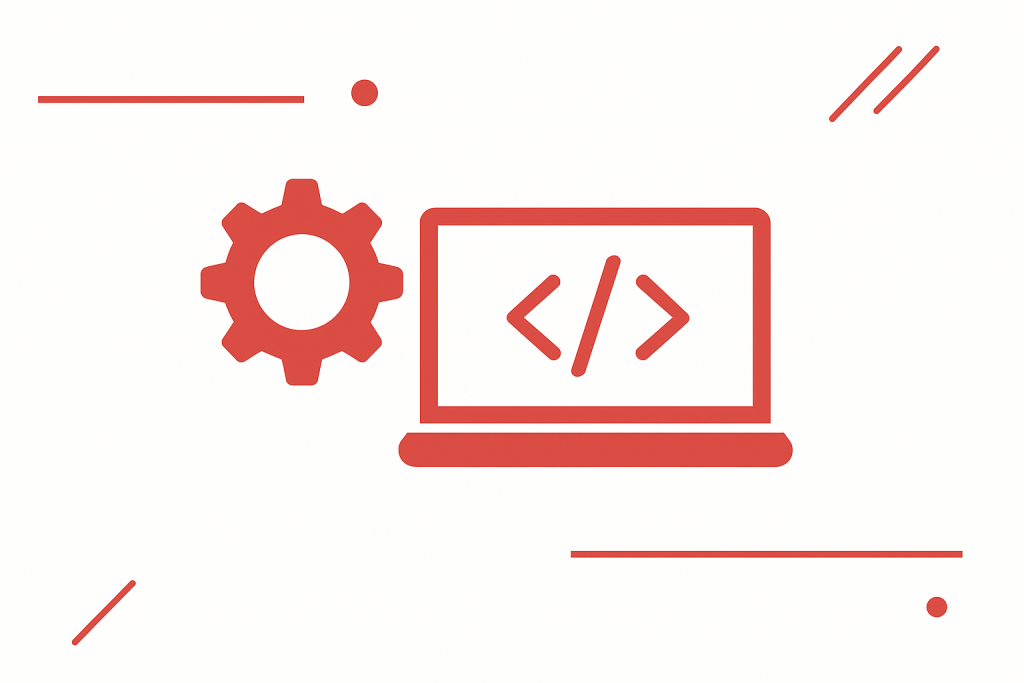- Services
- Artificial Intelligence Development
- Deep Learning & Neural Network Development Services
- Professional Machine Learning Development Services
- Enterprise Computer Vision Development Services
- Enterprise Natural Language Processing Development Services
- Chatbot & Conversational AI Development Services for Business
- Enterprise Computer Vision Solutions For Healthcare
- Transformative Healthcare AI Development
- Retail & E-commerce AI Solutions for Personalization & Growth
- AI Integration & MLOps Development Services
- AI Agent Development & Intelligent Automation
- Generative AI Solutions
- Outsourced Product Development
- Custom Software Development
- Software Customization & Integration
- Mobile App Development
- Custom Application Development
- Software Architecture Consulting
- Enterprise Application Development
- AI-Powered Documentation Services
- Product Requirements Document Services
- Artificial Intelligence Development
- Industries
- Healthcare Software Development
- Telemedicine Software Development
- Medical Software Development
- Electronic Medical Records
- EHR Software Development
- Remote Patient Monitoring Software Development
- Healthcare Mobile App Development Services
- Medical Device Software Development
- Healthcare Mobile App Development Services
- Patient Portal Development Services
- Practice Management Software Development
- Healthcare AI/ML Solutions
- Healthcare CRM Development
- Healthcare Data Analytics Solutions Development
- Hospital Management System Development | Custom HMS & Healthcare ERP
- Mental Health Software Development Services
- Medical Billing & RCM Software Development | Custom Healthcare Billing Solutions
- Laboratory Information Management System (LIMS) Development
- Clinical Trial Management Software Development
- Pharmacy Management Software Development
- Finance & Banking Software Development
- Retail & Ecommerce
- Fintech & Trading Software Development
- Online Dating
- eLearning & LMS
- Cloud Consulting Services
- Healthcare Software Development
- Technology
- Products
- About
- Contact Us
Top Dev News — Key Software Development Updates (last 2 weeks)
Here’s a concise, actionable recap of the most important software-development developments from the past two weeks. Each item explains what changed, why it matters to engineering leaders, and a single immediate step your team can take to stay ahead.
Two-week roundup: what happened, why it matters and one action to take
1. GitHub shifts toward an AI-first platform and deeper Azure integration
What happened: Microsoft is accelerating plans to bake AI across GitHub’s tools and to consolidate infrastructure onto Azure, while broadening support for multiple model providers.
Why it matters: Expect new AI features in CI, PR workflows and IDE integrations — and potential short-term disruption as services migrate or change pricing/SLAs.
Do this now: Audit your GitHub/Actions usage and create a contingency plan (self-hosted runners or alternate CI) in case of service or policy changes.
2. Recent GitHub Actions incidents highlight CI reliability risk
What happened: There were several workflow delays and processing problems affecting GitHub Actions in the period.
Why it matters: CI outages slow delivery, block releases and cascade into operational risk for teams that rely on one provider.
Do this now: Add a backup CI strategy (self-hosted runners or a secondary provider) and instrument pipeline health alerts.
3. Python maintenance release — test and patch your environments
What happened: A routine maintenance update for Python 3.13 was published during the window.
Why it matters: Python remains central to ML and backend stacks; minor releases include important bug fixes and security hardening.
Do this now: Schedule compatibility tests in CI for the new patch level and plan staged rollouts to production hosts.
4. Qualcomm acquires Arduino — edge tooling gets a big boost
What happened: Qualcomm announced its acquisition of Arduino, marrying silicon expertise with a vast developer community.
Why it matters: Expect new hardware and SDKs optimized for AI/edge workloads — a big opportunity for teams building IoT and on-device inference.
Do this now: If you have edge projects, add Arduino/Qualcomm to your test matrix and evaluate upcoming SDKs in a sandbox.
5. IBM & Anthropic partnership to deliver enterprise LLM tooling
What happened: IBM and Anthropic moved to integrate Claude into IBM’s enterprise toolset with a focus on governance and cost control.
Why it matters: Vendors are offering more enterprise-grade LLM stacks with built-in compliance features — useful for teams that need auditable model usage.
Do this now: Start a short vendor comparison for managed enterprise LLMs and add model-governance criteria to procurement checklists.
6. Developer sentiment: AI adoption rises but so does caution
What happened: Developer surveys show broad uptake of AI assistants alongside persistent concerns about correctness and trust.
Why it matters: Productivity gains only stick when paired with verification and security controls — developers want support, not blind automation.
Do this now: Roll out mandatory guidance and training for AI tools, and enforce code-review rules on AI-suggested commits.
7. Language and ecosystem signals: Python, TypeScript, Rust and Go remain strategic
What happened: Language indices and community trends keep pointing to Python for ML, TypeScript for front/edge work, and Go/Rust for infra and performance.
Why it matters: Hiring, training and roadmap choices should reflect these demand patterns to reduce technical debt and time-to-market.
Do this now: Align hiring and upskilling plans to prioritize Python and TypeScript while maintaining a small Rust/Go capability for critical systems.
8. AI coding tools intensify competition — expect rapid feature churn
What happened: Multiple vendors are racing to expand AI assistants, dev IDE integrations and workflow automation.
Why it matters: Rapid product changes increase lock-in and cost risk while changing developer UX frequently.
Do this now: Negotiate flexible vendor terms, require provenance metadata for AI suggestions, and track which model/version produced changes.
9. Supply-chain, governance and SBOMs for models gain traction
What happened: Industry conversations and product roadmaps increasingly treat models and model artifacts like code: provenance, SBOMs and access controls are becoming standard.
Why it matters: Regulatory and enterprise buyers will require traceability and predictable controls around model use.
Do this now: Extend your SBOM/SCA process to include model artifacts and require lineage metadata before production deployment.
10. Small but important trends: green coding, low-code pilots and WASM/edge uptake
What happened: Niche but growing signals point to energy-aware coding tools, enterprise low-code adoption and WebAssembly/edge experiments.
Why it matters: These trends can reduce time-to-market, lower operational cost, and enable new product footprints (browser/native parity, device compute).
Do this now: Run a small pilot (one sprint) to evaluate a low-code or WASM use case and measure time, cost and energy trade-offs.
Executive one-line cheat sheet
-
Platform & CI: Audit GitHub/Actions exposure and add CI failover.
-
AI & governance: Pilot enterprise LLMs with governance requirements.
-
Languages: Prioritize Python & TypeScript; keep Go/Rust bench.
-
Edge: Watch Qualcomm/Arduino for new SDKs.
-
Security: Treat model artifacts like code and extend SBOMs.
Recent Posts
- How Much Does Custom Software Development Cost in 2025? Real Numbers & Breakdown
- AI-Driven Job Displacement: The Workforce Overcapacity Crisis Unfolding Across Global Enterprises
- Transforming Education Through AI: How Intelligent Learning Loops Address the Skills-Knowledge Mismatch
- The Digital Authenticity Crisis: When AI-Generated Content Transforms Culture Into Commodified Service
- Non-Human Identities Crisis: How AI Agents Are Transforming Enterprise Cybersecurity and Identity Management at Unprecedented Scale


